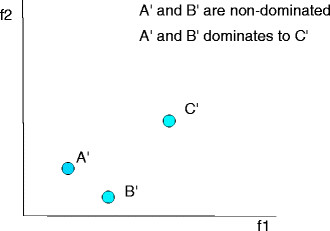Selection Strategies
Learn how to use different metrics and strategies to select the best community detection solution from a Pareto front
Understanding Pareto Front Selection
When using HpMocd for community detection, you often get multiple equally valid solutions along a Pareto front. Each solution represents a different trade-off between competing objectives (like intra-community cohesion vs. inter-community separation). This guide shows you how to systematically select the best solution for your specific needs.
Quick Start: Generate a Pareto Front
First, let’s generate a Pareto front using the enhanced algorithm:
import networkx as nx
import numpy as np
from pymocd import HpMocd
from sklearn.metrics import adjusted_rand_score
import matplotlib.pyplot as plt
G = nx.karate_club_graph()
def generate_robust_pareto_front(G, max_attempts=3):
best_front = None
best_size = 0
for attempt in range(max_attempts):
# Recommendation: Try different parameter combinations
params = {
'num_gens': [150, 200, 250][attempt],
'pop_size': [120, 150, 100][attempt],
'mut_rate': [0.2, 0.4, 0.8][attempt],
'cross_rate': [0.9, 1.0, 0.8][attempt]
}
alg = HpMocd(G, **params)
front = alg.generate_pareto_front()
if len(front) > best_size:
best_front = front
best_size = len(front)
return best_front
# Generate the front
pareto_front = generate_robust_pareto_front(G)
print(f"Generated {len(pareto_front)} Pareto-optimal solutions")
(i) Coherence-Based Selection
Use case: When you have an approximation of the ground truth or domain knowledge about the expected community structure.
Implementation
def select_by_coherence(pareto_front, G, coherence_metric='adjusted_rand'):
true_labels = []
for node in sorted(G.nodes()):
true_labels.append(0 if G.nodes[node]['club'] == 'Mr. Hi' else 1)
best_solution = None
best_coherence = -1
coherence_scores = []
for assignment, objectives in pareto_front:
pred_labels = [assignment[node] for node in sorted(G.nodes())]
if coherence_metric == 'adjusted_rand':
coherence = adjusted_rand_score(true_labels, pred_labels)
coherence_scores.append(coherence)
if coherence > best_coherence:
best_coherence = coherence
best_solution = (assignment, objectives)
return best_solution, best_coherence, coherence_scores
best_solution, coherence, all_coherences = select_by_coherence(pareto_front, G)
print(f"Best coherence: {coherence:.3f}")
print(f"Selected solution has {len(set(best_solution[0].values()))} communities")
When to Use?
Problems that you may encounter.

Here, we have a lot of solutions with high coerence, but none 1. Why?
- Because the best ground truth solution, it is not a non-dominated solution;
- Your “best” solution probably had less intra or inter values, so, another one dominate it.

(ii) Modularity-Based Selection
Use case: When you want to maximize the classical modularity (or another) metric, balancing internal connections vs. external connections.
Implementation
def select_by_modularity(pareto_front, G):
best_solution = None
best_modularity = -1
modularity_scores = []
for assignment, objectives in pareto_front:
# Convert assignment to community structure
communities = {}
for node, comm_id in assignment.items():
if comm_id not in communities:
communities[comm_id] = []
communities[comm_id].append(node)
modularity = nx.community.modularity(G, communities.values())
modularity_scores.append(modularity)
if modularity > best_modularity:
best_modularity = modularity
best_solution = (assignment, objectives)
return best_solution, best_modularity, modularity_scores
mod_solution, modularity, all_modularities = select_by_modularity(pareto_front, G)
print(f"Best modularity: {modularity:.3f}")
print(f"Selected solution has {len(set(mod_solution[0].values()))} communities")
When to Use
(iii) Community Count Preference
Use case: When you have prior knowledge about the expected number of communities.
Implementation
def select_by_community_count(pareto_front, target_communities=None, strategy='closest'):
community_counts = []
for assignment, objectives in pareto_front:
count = len(set(assignment.values()))
community_counts.append(count)
if strategy == 'max':
# Solution with most communities (finest granularity)
target_idx = np.argmax(community_counts)
elif strategy == 'min':
# Solution with fewest communities (coarsest granularity)
target_idx = np.argmin(community_counts)
elif strategy == 'closest' and target_communities:
# Solution closest to target number
distances = [abs(count - target_communities) for count in community_counts]
target_idx = np.argmin(distances)
elif strategy == 'range':
# Show distribution of community counts
from collections import Counter
count_dist = Counter(community_counts)
print("Community count distribution:", dict(sorted(count_dist.items())))
return None, None
else:
raise ValueError("Invalid strategy or missing target_communities")
selected_solution = pareto_front[target_idx]
return selected_solution, community_counts[target_idx]
select_by_community_count(pareto_front, strategy='range')
targets = [2, 3, 4]
for target in targets:
solution, actual_count = select_by_community_count(pareto_front, target, 'closest')
if solution:
print(f"Target: {target}, Actual: {actual_count}, Objectives: {solution[1]}")
for strategy in ['min', 'max']:
solution, count = select_by_community_count(pareto_front, strategy=strategy)
print(f"{strategy.capitalize()} communities: {count}, Objectives: {solution[1]}")
When to Use?
Recommendations
flowchart TD
A["Do you have ground truth approximation?"]
A -->|YES| B["Use Coherence-Based Selection"]
A -->|NO| C["Do you know expected community count?"]
C -->|YES| D["Use Community Count Preference"]
C -->|NO| E["Do you prefer one objective over another?"]
E -->|YES| F["Use Objective-Based Selection"]
E -->|NO| G["Want mathematically principled choice?"]
G -->|YES| H["Use Knee Point Detection"]
G -->|NO| I["Use TOPSIS Multi-Criteria"]
G --> J["Default: Use Modularity-Based Selection"]
| Scenario | Recommended Approach |
|---|---|
| Small networks (<100 nodes) | Try all strategies, visual inspection |
| Large networks (>1000 nodes) | Focus on modularity or objectives |
| Multiple runs | Use ensemble: select most frequent choice |
| Uncertain objectives | Start with knee point, then refine |
Start with modularity or knee point detection, then refine based on your specific needs. Remember: the “best” solution is the one that works best for your application!
References
- HpMocd Documentation: Basic Usage Guide
- NetworkX Community Detection: Community Detection Algorithms
- TOPSIS Method: Hwang, C.L. and Yoon, K. (1981). Multiple Attribute Decision Making
- Pareto Optimality: Miettinen, K. (2012). Nonlinear Multiobjective Optimization
Last updated 22 Aug 2025, 20:08 -0300 .